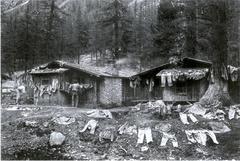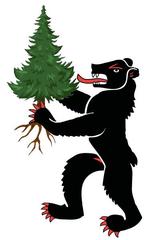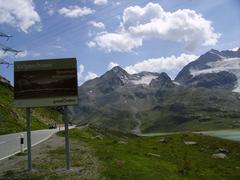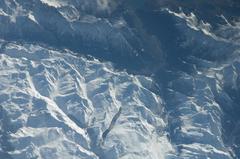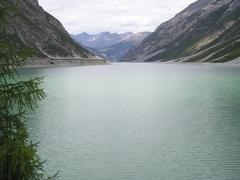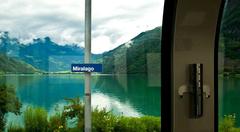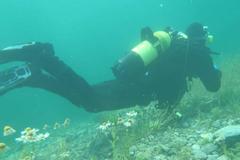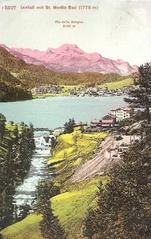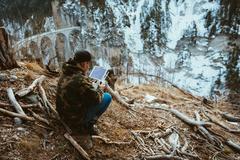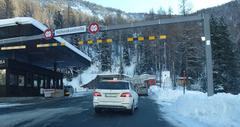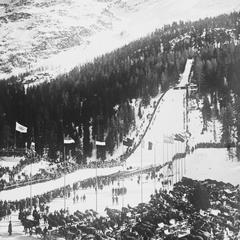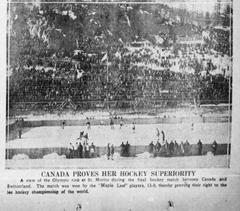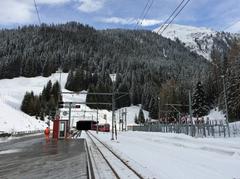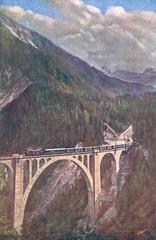
Hochjuvalt Castle: Visiting Hours, Tickets, and Historical Insights in the Canton of Grisons
Date: 04/07/2025
Introduction
Perched above the scenic Domleschg valley in the Canton of Graubünden (Grisons), Switzerland, Hochjuvalt Castle (Ruine Hochjuvalt) stands as a testament to the region’s medieval heritage. Built during the High Middle Ages—most likely in the 12th or 13th century—the castle once commanded the vital Hinterrhein River routes, serving as both a military stronghold and seat of noble power. Today, its evocative ruins invite visitors to explore a pivotal chapter in Swiss history, while panoramic vistas of the Alps and Domleschg valley offer an unforgettable backdrop (Graubünden Tourism, architecturelab.net).
Table of Contents
Historical Overview
Medieval Origins and Strategic Role
Originally constructed to oversee the critical Alpine trade and travel routes, Hochjuvalt Castle was a linchpin in the network of fortifications that shaped the political and economic landscape of medieval Graubünden. The earliest mentions of Hochjuvalt appear in 13th-century records, but its advantageous placement on a rocky outcrop above the Hinterrhein River hints at earlier defensive use. The castle became the seat of local lordship, governed by families like the Vogelsang and later the Juvalta, who controlled trade, levied tolls, and exercised authority over surrounding villages (Graubünden Historical Maps).
Castle Architecture and Features
Hochjuvalt Castle’s design reflects the defensive priorities of its era:
- Curtain Walls: Massive, stone-built walls (over 2 meters thick in places) encircled the core stronghold to resist siege weaponry.
- Residential Tower (Keep): The four-storey keep served as both the lord’s residence and the ultimate line of defense.
- Gatehouses and Courtyards: Fortified gateways controlled access, while the inner courtyard accommodated daily activities and service buildings.
- Natural Defenses: The castle’s rocky promontory and steep slopes enhanced its impregnability and reduced the need for artificial barriers.
- Architectural Evolution: Early Romanesque elements (rounded arches, small windows) were later complemented by Gothic features (pointed arches, larger windows), reflecting broader trends in Swiss castle construction (architecturelab.net).
Conflicts and Decline
During the 15th-century Schamserfehde—a period of local feuds and shifting alliances—Hochjuvalt was destroyed, then rebuilt with improved defenses. However, the rise of the Three Leagues and shifting political power rendered many castles obsolete. In 1462, the Juvalta family sold the property, and it was abandoned in the early 16th century, ultimately falling into picturesque ruin (Graubünden Tourism).
Cultural Legacy
Hochjuvalt Castle remains a powerful symbol of Graubünden’s transformation from feudal fragmentation to communal federation. The ruins highlight the region’s multicultural heritage, shaped by centuries of political upheaval, and form part of the renowned “Swiss Castle Valley” network (Graubünden Historical Maps, mindfulpnwtravels.com).
Archaeological and Preservation Efforts
Ongoing preservation ensures visitor safety while maintaining historical integrity. Surviving tower and wall segments provide valuable insights for archaeologists and historians, and interpretive signage on-site helps contextualize the castle’s role in regional history (Graubünden Tourism).
Visiting Hochjuvalt Castle
Opening Hours and Entry
- Access: Open-air site, accessible year-round.
- Hours: Daylight hours (typically 8:00 AM to sunset); upper fortress area closed for safety.
- Tickets: Free entry; no ticketing system. Donations to local preservation efforts are appreciated.
(Outdooractive, Claudia Travels)
Directions and Access
By Public Transport:
- Trains (RhB) to Rothenbrunnen station (Chur–Thusis line); 15–45 minutes’ hike to the ruins via marked trails.
- Regional buses connect Rothenbrunnen with Chur and nearby villages.
By Car:
- Take A13 motorway (exit Rothenbrunnen or Thusis Nord); park in Rothenbrunnen village.
- Short but steep uphill hike to the castle.
On Foot:
- Accessible via hiking trails from Rothenbrunnen or as part of the Domleschg Valley Castle Trail.
Coordinates: 46.7416° N, 9.4267° E (Outdooractive).
Visitor Facilities and Accessibility
- On-site: No staffed visitor center, restrooms, or food service. Picnic benches available nearby.
- Amenities: Cafés, shops, and public toilets in Rothenbrunnen and Feldis.
- Accessibility: Uneven, rocky paths; not wheelchair accessible and challenging for those with limited mobility. Sturdy footwear is essential.
Nearby Attractions
- Domleschg Valley Castles: Ortenstein, Sins, Hohenrätien, and others along the “Swiss Castle Valley” route.
- Feldis: Mountain village with panoramic terraces and family activities.
- Rhine Gorge (Ruinaulta): Spectacular canyon accessible by train from Ilanz.
- Viamala Gorge: Dramatic hiking destination.
Events, Tours & Photography
- Guided Tours: No regular schedule, but local tourism offices occasionally offer themed walks including Hochjuvalt.
- Photography: Best light in early morning/late afternoon. Top viewpoints at the lower ring wall and along adjacent hiking trails.
Frequently Asked Questions (FAQ)
Q: Do I need to buy tickets to visit Hochjuvalt Castle?
A: No, entry is free.
Q: What are the castle’s visiting hours?
A: Open year-round; daylight hours recommended.
Q: Is the castle accessible for people with limited mobility?
A: Due to uneven terrain, access is limited; not wheelchair accessible.
Q: Are there guided tours available?
A: Occasional themed hikes by local tourism offices; check ahead.
Q: Is parking available?
A: Yes, parking is available in Rothenbrunnen.
Q: Are pets allowed?
A: Yes, but dogs should be leashed.
Practical Visitor Tips
- Best Season: May to October for favorable weather and clear trails.
- Footwear: Sturdy hiking boots essential.
- What to Bring: Water, snacks, layered clothing, sun protection, and a camera.
- Conservation: Stay on marked paths, avoid climbing on fragile walls, and carry out all litter.
- Local Language: German is primary; English is widely understood in tourist areas.
Conclusion
Hochjuvalt Castle provides a captivating window into Graubünden’s medieval past, blending evocative ruins with breathtaking natural scenery. Its strategic location, rich history, and network of nearby castles make it a must-visit for history fans, hikers, and photographers alike.
For the best experience, plan your visit in late spring through early autumn, wear appropriate footwear, and check local tourism resources for event updates. Download the Audiala app for guided tours and offline maps, and follow our channels for more insights into Graubünden’s storied heritage.
References and Further Reading
- Graubünden Tourism
- architecturelab.net
- Outdooractive
- Claudia Travels
- Graubünden Historical Maps
- mindfulpnwtravels.com
Images:
- Hochjuvalt Castle ruins with panoramic Hinterrhein valley view (alt: “Hochjuvalt Castle ruins overlooking the Hinterrhein valley in Graubünden”)
- Close-up of Hochjuvalt Castle’s curtain wall and arrow slits (alt: “Thick stone curtain wall with arrow slits at Hochjuvalt Castle”)
- Map highlighting Hochjuvalt Castle’s location in Graubünden
Plan your trip, respect the site’s heritage, and immerse yourself in the medieval and natural wonders of the Domleschg valley.









